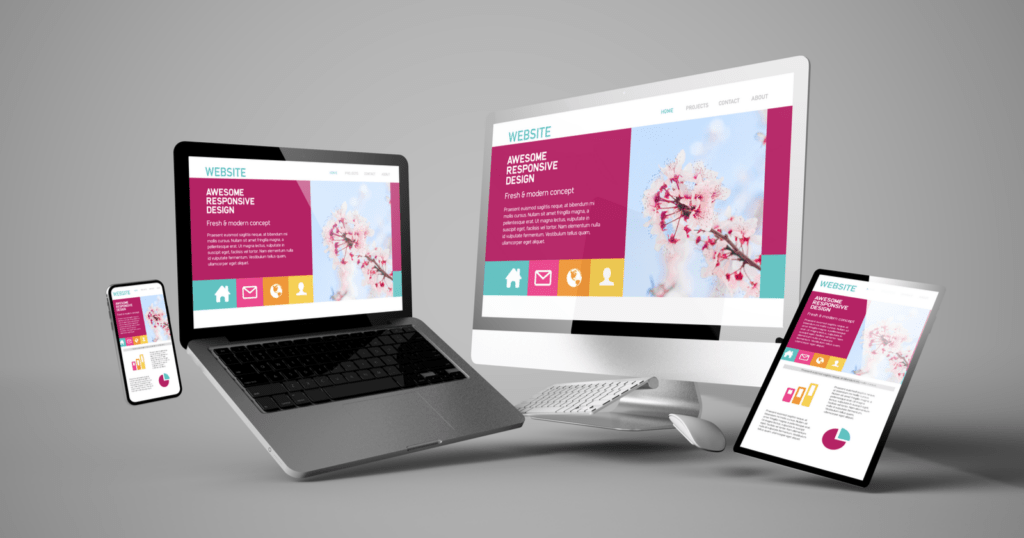Leading Tips for Developing an Impactful Website Style That Converts
To accomplish this, one should consider a selection of variables, including comprehending the target audience, prioritizing user experience, and enhancing for mobile systems. The strategic usage of engaging call-to-actions and a well-defined visual hierarchy plays an important role in guiding users with their trip.

Understand Your Target Audience
Comprehending your target market is fundamental to reliable site layout, as it prepares for developing an interesting customer experience. Recognizing that your individuals are, including their demographics, preferences, and actions, makes it possible for designers to tailor the website's web content, format, and performance to fulfill specific requirements.
Performing extensive marketing research is crucial in this process. Studies, meetings, and analytics can supply useful understandings into individual expectations and pain points. By assembling this information, designers can create individual characters that stand for different sections of the target market, guaranteeing that design decisions are informed and pertinent.
In addition, recognizing the target market helps in picking proper layout components such as color systems, typography, and images that reverberate with individuals. A site that speaks straight to its audience promotes a feeling of link and depend on, urging longer check outs and higher conversion prices.
Eventually, a user-centered technique to website style not only boosts customer complete satisfaction yet additionally supports service goals by driving interaction and loyalty. By focusing on the requirements and choices of the target market, a website can successfully serve its purpose and accomplish desired outcomes.
Prioritize Individual Experience
To boost the total effectiveness of an internet site, focusing on user experience (UX) is necessary (Website Design). A well-designed UX guarantees that visitors can navigate the website effortlessly, locate information swiftly, and engage with content meaningfully. This leads to boosted user satisfaction and higher conversion rates
Begin by implementing intuitive navigation. Menus should be logically structured, permitting customers to locate crucial locations of the site with very little initiative. Uniformity in layout aspects, such as color schemes and fonts, promotes experience, which is essential for preserving user interaction.
Additionally, think about the filling rate of your site. A delay of simply a few seconds can bring about significant drop-offs, as users are less likely to wait for a slow-loading web page. Improving pictures and maximizing code can enhance performance and retain visitors.
Additionally, clearness in content discussion is vital. Use succinct, interesting language and break up message with visuals her explanation to enhance readability. By focusing on customer experience, you not only develop a much more satisfying environment for site visitors but likewise enhance your brand's reliability. Ultimately, a focus on UX is an investment in the long-lasting success of your website.
Maximize for Mobile Gadgets
Maximizing for mobile phones is crucial in today's digital landscape, where a boosting number of individuals access internet sites with smartphones and tablets. A mobile-friendly layout not only enhances customer experience but also plays a significant function in boosting internet search engine rankings. To achieve this, it is crucial to take on a receptive design that instantly adjusts to numerous display sizes and orientations.

Loading rate is one more critical element; mobile users are typically less person and expect fast accessibility to info. By focusing on mobile optimization, you make sure that your website continues to be competitive and properly engages a wider audience.
Use Engaging Call-to-Actions
An internet site's efficiency frequently pivots on its capacity to guide site visitors toward wanted activities, making engaging call-to-actions (CTAs) essential parts of style. CTAs act as the pivotal points that route users to engage with the site, whether that implies buying, enrolling in an e-newsletter, or downloading and install a resource.
To create reliable CTAs, clearness is extremely important. Usage concise language that clearly interacts the activity you want the user to take.
In addition, think about using directional hints, such as arrowheads or images, to direct users toward these buttons. a knockout post By concentrating on these elements, companies can significantly boost user involvement, driving conversions and inevitably accomplishing their web site's objectives.
Emphasis on Visual Hierarchy
Reliable internet site layout depends greatly on a well-structured visual power structure that overviews users through material flawlessly. By organizing components in a way that focuses on details, designers can enhance individual experience and help with decision-making. This involves using size, shade, comparison, and spacing tactically to attract interest to the most essential components of a website.
The use of bigger font styles for headings and subheadings establishes a clear distinction in between various areas, allowing customers to scan material effortlessly. Additionally, employing different shades for buttons and calls-to-action can catch user attention and encourage interaction. Whitespace is one more vital component; it protects against clutter and makes it possible for individuals to focus on essential messages without distractions.
Pictures and graphics need to complement the text while likewise sticking to the well established pecking order, reinforcing the general message (Website Design). Consistency in layout components, such as color design and typography, further reinforces the visual hierarchy, making navigating intuitive

Conclusion
In verdict, reliable web site design requires a comprehensive understanding of the target audience, prioritization of customer experience, and mobile optimization. Eventually, a well-executed site style offers as a critical part in driving user activities and achieving organization goals.